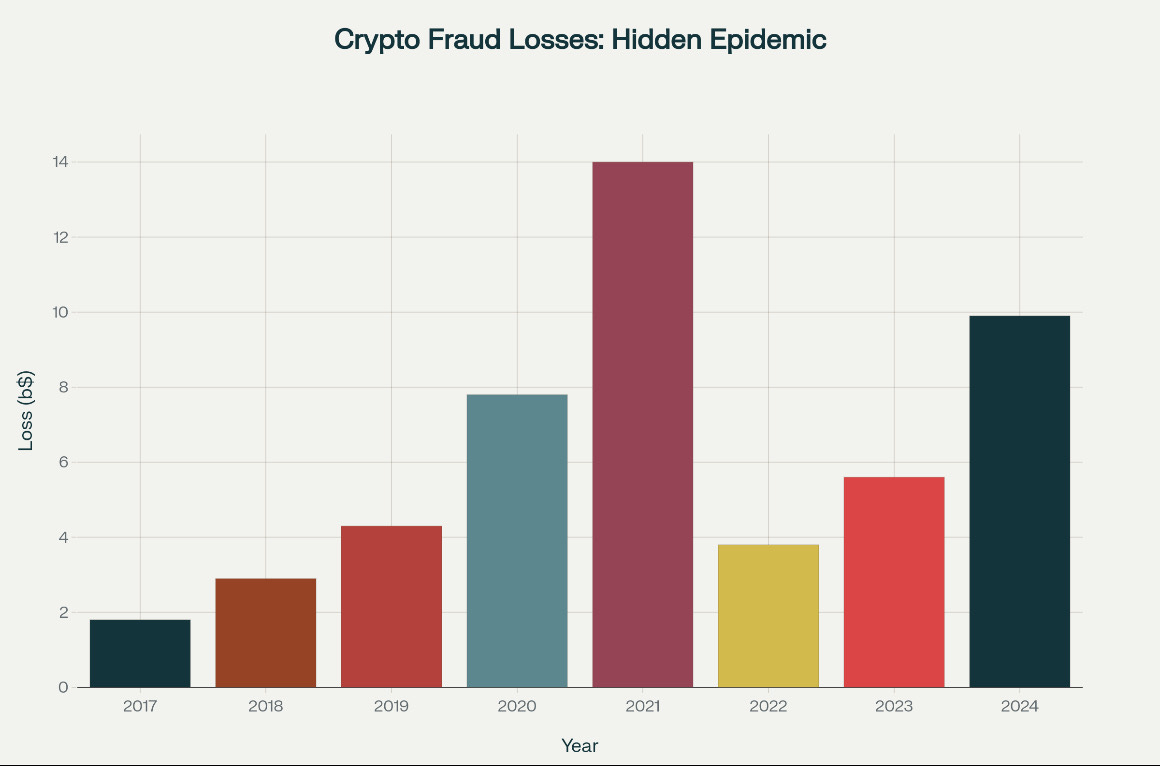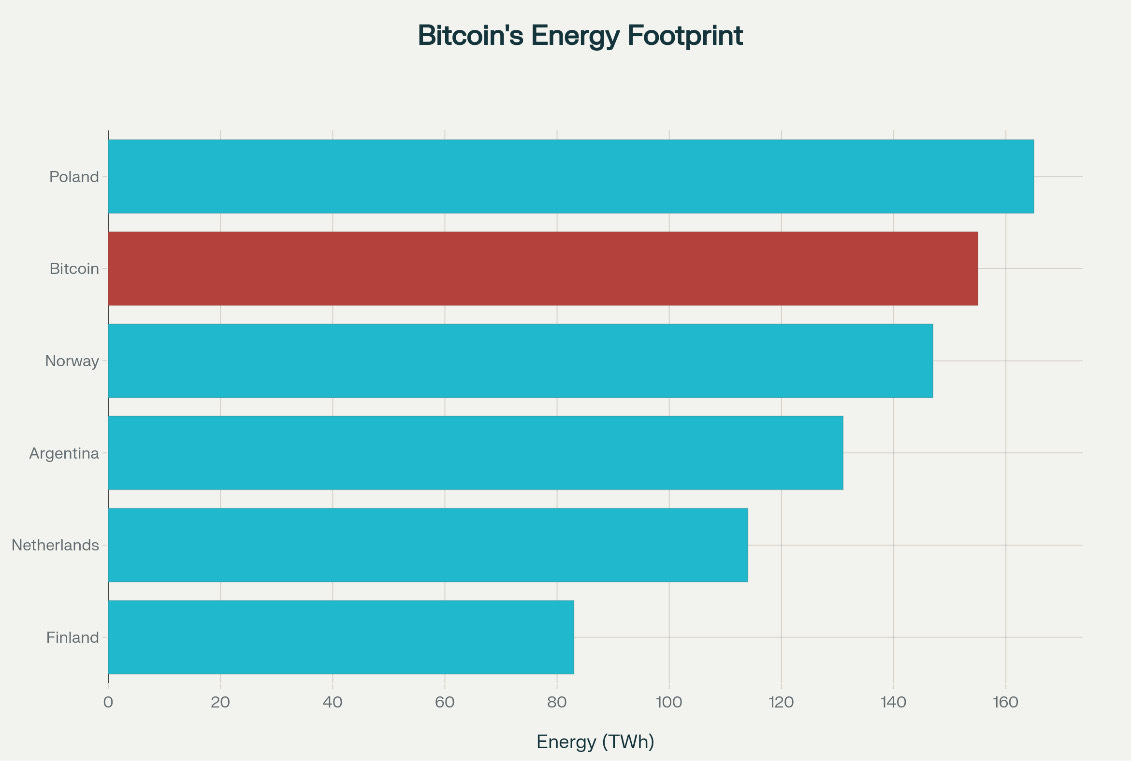The Dark Side of Digital Gold: Cryptocurrency’s Hidden Dangers That Could Destroy Your Future
The cryptocurrency revolution promised financial freedom, decentralized power, and wealth for all. But beneath the glossy marketing campaigns and celebrity endorsements lies a darker reality that the crypto industry desperately wants to keep hidden. While Bitcoin soars to new heights and institutional adoption grows, a perfect storm of environmental destruction, massive fraud, and systemic risks threatens to bring down the entire digital economy and your investments with it.
This isn’t just another crypto skeptic’s rant. This is an evidence-based investigation into the genuine dangers that could make the 2008 financial crisis look like a minor hiccup.
The data reveals shocking truths about energy consumption, fraud epidemic, market manipulation, and emerging threats that could render your digital assets worthless overnight.
The $100 Billion Fraud Machine
Let’s start with the numbers that will make your blood run cold. Since 2017, cryptocurrency fraud has stolen over $70 billion from unsuspecting investors, with the trend showing no signs of slowing down. The year 2021 witnessed an unprecedented $14 billion in losses, while 2024 has already seen nearly $10 billion disappear into the digital void

But here’s what the crypto evangelists won’t tell you: older Americans are being systematically targeted and destroyed. The FBI’s 2023 Cryptocurrency Fraud Report revealed that people aged 60 and older filed over 16,000 complaints, losing more than $1.6 billion far more than any other age group.
These aren’t just numbers on a spreadsheet; they represent retirement savings, life insurance payouts, and college funds vanishing into thin air.
The most insidious weapon in this arsenal is the “pig butchering” scam, where criminals build fake romantic relationships over months, slowly gaining trust before convincing victims to invest their life savings into fraudulent cryptocurrency platforms. Revenue from these romance scams grew nearly 40% in 2024, with the average victim losing almost $5,000. Amy Nofziger from AARP warns that the actual losses are likely much higher, as many victims are too ashamed to report their losses.
The Environmental Apocalypse Hidden in Plain Sight
While crypto proponents tout blockchain’s revolutionary potential, they’re conveniently silent about the environmental catastrophe it’s creating. Bitcoin mining alone consumes approximately 155 terawatt-hours of electricity annually more than entire countries like Argentina and the Netherlands.
To put this in perspective, Bitcoin mining now accounts for 0.5% of global electricity consumption, using more than seven times the electricity of all Google’s global operations combined. Each Bitcoin transaction can consume up to 1,200 kWh of energy equivalent to nearly 100,000 VISA transactions. This isn’t just an energy problem; it’s a public health crisis in disguise.
A groundbreaking Harvard study revealed that Bitcoin mining exposes 1.9 million Americans to harmful fine particulate air pollution (PM2.5), which increases cancer, heart disease, and dementia risks.
The pollution doesn’t respect borders residents in New York City and Houston breathe toxic air from Bitcoin mines hundreds of miles away. The carbon footprint is equally staggering, with Bitcoin alone generating 22-23 million metric tons of CO2 annually, comparable to entire nations like Greece.
The Whale Manipulation Machine
Here’s a dirty secret the crypto industry desperately wants to hide: a small group of “whales” individuals or entities holding massive amounts of cryptocurrency can manipulate entire markets at will.
These digital oligarchs control up to 40% of Bitcoin through fewer than 2,000 wallets, giving them unprecedented power to manipulate prices and destroy retail investors.
Whales employ sophisticated manipulation tactics that would be illegal in traditional financial markets:
Pump and dump schemes: Artificially inflating prices to attract retail investors, then selling off holdings to cause massive crashes
Spoofing: Placing massive fake buy or sell orders to create false impressions of demand
Stop-loss hunting: Deliberately triggering retail investors’ stop-loss orders to force cascading sell-offs
Wash trading: Buying and selling the same assets to create artificial trading volume
The cryptocurrency market’s lack of regulation means these tactics operate in a legal gray area, leaving retail investors defenseless against institutionalized manipulation.
The Custody Crisis: Your Money, Their Control
The collapse of FTX in 2022 should have been a wake-up call, but the crypto industry has learned to suppress these inconvenient truths. Sam Bankman-Fried, once hailed as crypto’s golden boy, was sentenced to 25 years in prison for stealing at least $10 billion from customers and investors. The FTX collapse revealed that customer funds were illegally diverted to cover expenses, debts, and risky trades at Alameda Research.
But FTX is just the tip of the iceberg. The cryptocurrency exchange industry has lost over $1.7 billion to hacks in 2023 alone, with some of the largest thefts in history occurring in recent years:
Ronin Network: $625 million stolen by North Korean hackers
Poly Network: $611 million in a single attack
Binance BNB Bridge: $569 million exploit
Coincheck: $532 million theft
The custody crisis extends beyond external hacks. Coinbase, the largest U.S. cryptocurrency exchange, recently suffered a devastating insider threat attack where criminals bribed customer support staff to steal sensitive data, demanding a $20 million ransom. This attack could cost Coinbase up to $400 million in remediation and reimbursements.
The Regulatory Time Bomb
Governments worldwide are awakening to cryptocurrency’s systemic risks, and the resulting regulatory crackdown could devastate the industry overnight. The European Union’s Markets in Crypto-Assets (MiCA) regulation requires stablecoin issuers to obtain proper authorization, potentially delisting major cryptocurrencies like USDT from European platforms. In the United States, the SEC has already ordered Binance to pay $4 billion in fines, while five crypto companies faced SEC lawsuits in 2023.
The regulatory uncertainty creates a sword of Damocles hanging over every cryptocurrency investment. Overnight regulatory changes could make your digital assets worthless, freeze your accounts, or even criminalize possession of certain cryptocurrencies.
The Stablecoin Deception
USDT (Tether), the world’s largest stablecoin with over $100 billion in circulation, represents one of cryptocurrency’s most dangerous hidden risks. Despite claims of being “backed” by U.S. dollars, only 83% of USDT reserves actually consist of cash and cash equivalents. The remaining 17% comprises higher-risk assets including corporate bonds, Bitcoin, and secured loans with limited transparency.
S&P Global’s assessment reveals troubling concerns about USDT’s stability, including lack of information about custodians’ creditworthiness, no regulatory oversight, and limited transparency about asset composition. The collapse of Terra Luna in 2022—which wiped out nearly $40 billion in value demonstrated how quickly algorithmic stablecoins can fail.
The Quantum Computing Threat
While the crypto industry celebrates today’s gains, a quantum computing apocalypse looms on the horizon. Quantum computers, once powerful enough, could break the cryptographic foundations that secure all cryptocurrencies. This isn’t science fiction it’s a mathematical certainty that experts now believe could happen within a decade rather than decades.
The threat is particularly acute for Bitcoin, where quantum computers could derive private keys from public keys, enabling massive theft of funds. Approximately 4 million Bitcoins could be at immediate risk when quantum computers achieve sufficient power. While the crypto industry claims it can adapt, the transition to quantum-resistant systems faces enormous technical and practical challenges.
The Money Laundering Highway
Cryptocurrency has become the preferred method for money laundering, with nearly $100 billion in illicit funds flowing through conversion services since 2019. Criminals exploit cryptocurrency’s cross-border, virtually instant, and relatively inexpensive transaction capabilities to launder money from drug trafficking, terrorism financing, and other illicit activities.
The transparency of blockchain technology, often touted as a security feature, actually facilitates money laundering by allowing criminals to track and time their transactions perfectly. Sophisticated laundering techniques include crypto mixers, cross-chain bridges, and complex “hopping” between multiple wallets to obscure fund origins.
The Hidden Benefits: Context and Balance
Despite these overwhelming risks, dismissing cryptocurrency entirely would be intellectually dishonest. The technology offers genuine benefits that explain its persistent appeal and growing institutional adoption:
Financial Innovation: Cryptocurrency enables programmable money, smart contracts, and decentralized finance applications that could revolutionize traditional banking.
Financial Inclusion: Digital currencies provide banking services to unbanked populations worldwide, particularly in developing countries with unstable currencies.
Hedge Against Inflation: In countries experiencing hyperinflation, cryptocurrency can preserve wealth more effectively than rapidly depreciating local currencies.
Technological Advancement: Blockchain technology drives innovation in supply chain management, digital identity verification, and decentralized systems beyond finance.
Investment Diversification: Despite volatility, cryptocurrency has provided significant returns for early adopters and offers portfolio diversification benefits.
The Institutional Adoption Paradox
The crypto industry heavily promotes institutional adoption as validation of cryptocurrency’s legitimacy, but this creates new systemic risks. When major corporations, pension funds, and governments hold significant cryptocurrency positions, market crashes don’t just affect individual investors they threaten entire economic systems.
The concentration of cryptocurrency holdings among institutional investors also undermines the decentralization promise, creating new forms of centralized control that could be more dangerous than traditional financial systems.
Conclusion: The Uncomfortable Truth
The cryptocurrency revolution has unleashed forces that its creators never anticipated and that current participants refuse to acknowledge. While the technology holds genuine promise for financial innovation and inclusion, the current implementation creates unprecedented risks that could destroy individual wealth and destabilize global financial systems.
The environmental destruction, massive fraud, market manipulation, custody failures, regulatory uncertainty, and emerging quantum threats represent a perfect storm that could make the 2008 financial crisis pale in comparison. The crypto industry’s response has been to suppress these uncomfortable truths, promote unrealistic benefits, and leave retail investors defenseless against sophisticated threats.
This doesn’t mean cryptocurrency is inherently evil or worthless. It means that current implementations are fundamentally flawed and dangerous. The technology needs massive reforms, comprehensive regulation, and honest acknowledgment of its risks before it can fulfill its revolutionary promise.
The choice is yours: you can buy into the crypto hype and hope for the best, or you can demand better.
The future of digital finance depends on our willingness to confront these uncomfortable truths and build safer, more sustainable systems that serve humanity rather than destroying it.
The data doesn’t lie the only question is whether you’re ready to listen.






